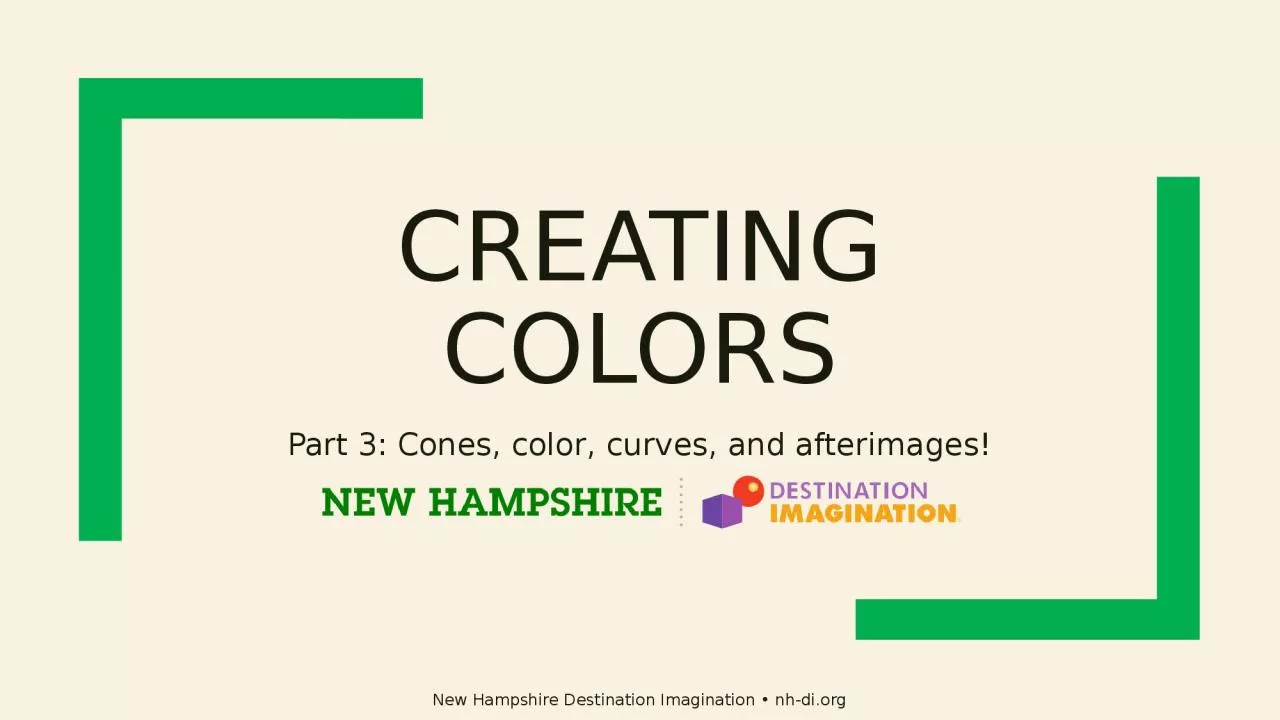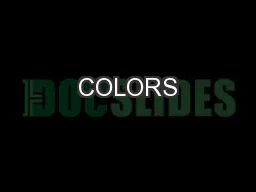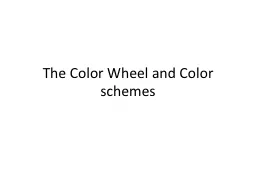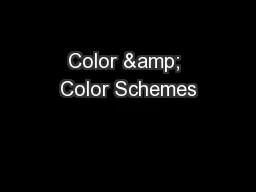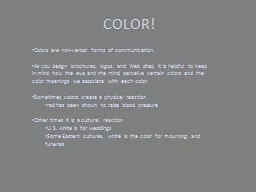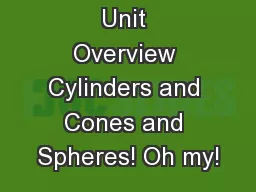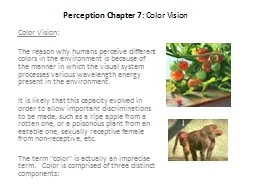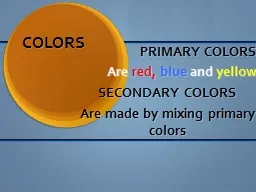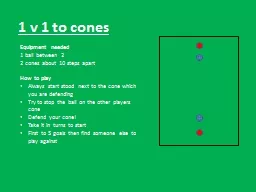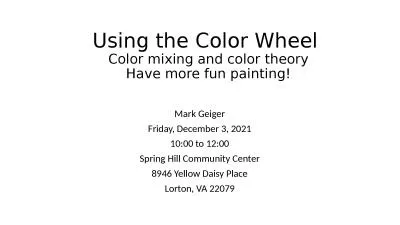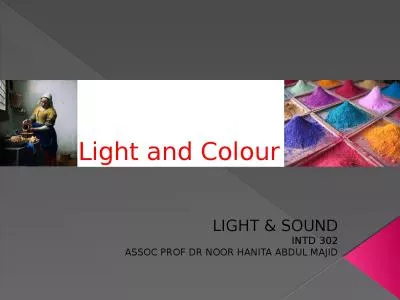PPT-Creating Colors Part 3: Cones, color, curves, and afterimages!
Author : murphy | Published Date : 2024-01-29
New Hampshire Destination Imagination nhdiorg Lets Review The Nature of Light Sunlight contains colors of all wavelengths from the longest red to orange yellow
Presentation Embed Code
Download Presentation
Download Presentation The PPT/PDF document "Creating Colors Part 3: Cones, color, cu..." is the property of its rightful owner. Permission is granted to download and print the materials on this website for personal, non-commercial use only, and to display it on your personal computer provided you do not modify the materials and that you retain all copyright notices contained in the materials. By downloading content from our website, you accept the terms of this agreement.
Creating Colors Part 3: Cones, color, curves, and afterimages!: Transcript
Download Rules Of Document
"Creating Colors Part 3: Cones, color, curves, and afterimages!"The content belongs to its owner. You may download and print it for personal use, without modification, and keep all copyright notices. By downloading, you agree to these terms.
Related Documents

